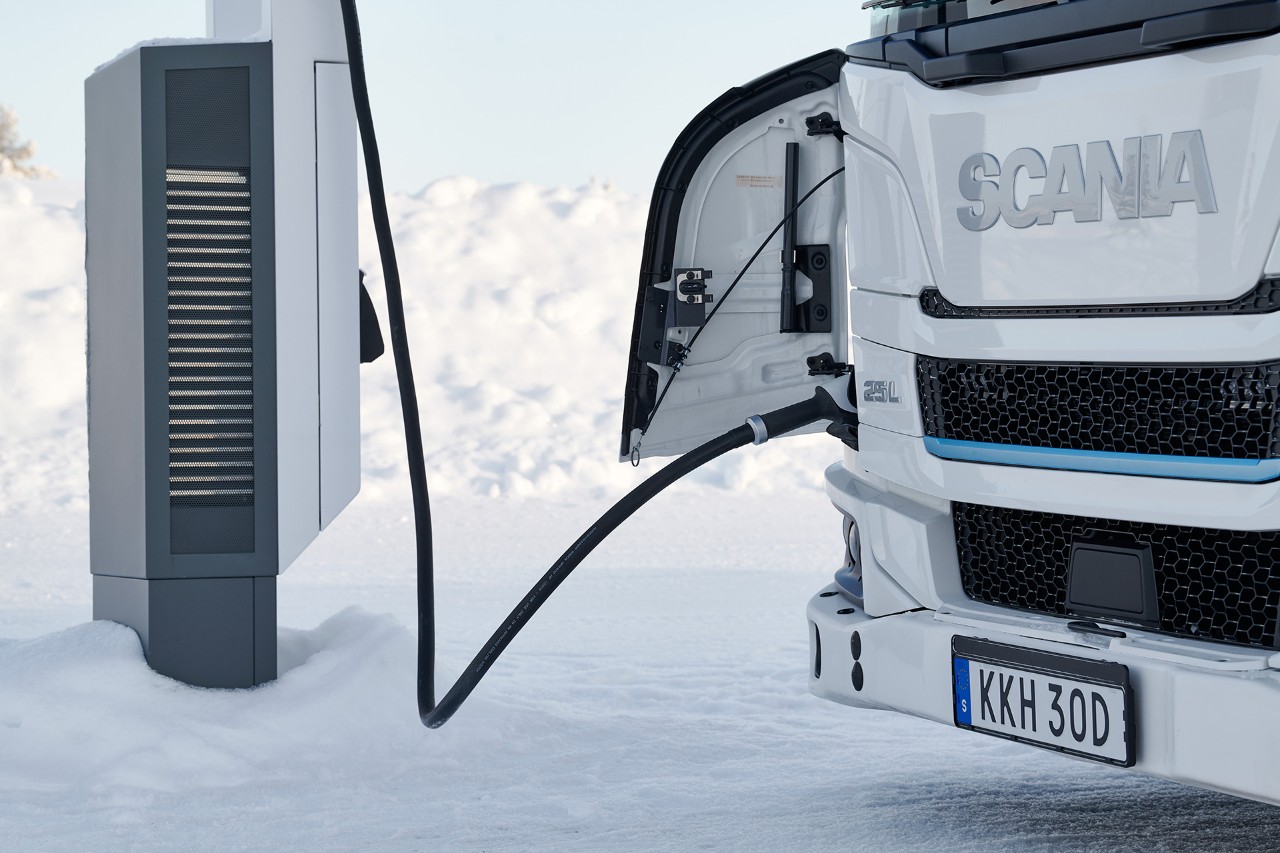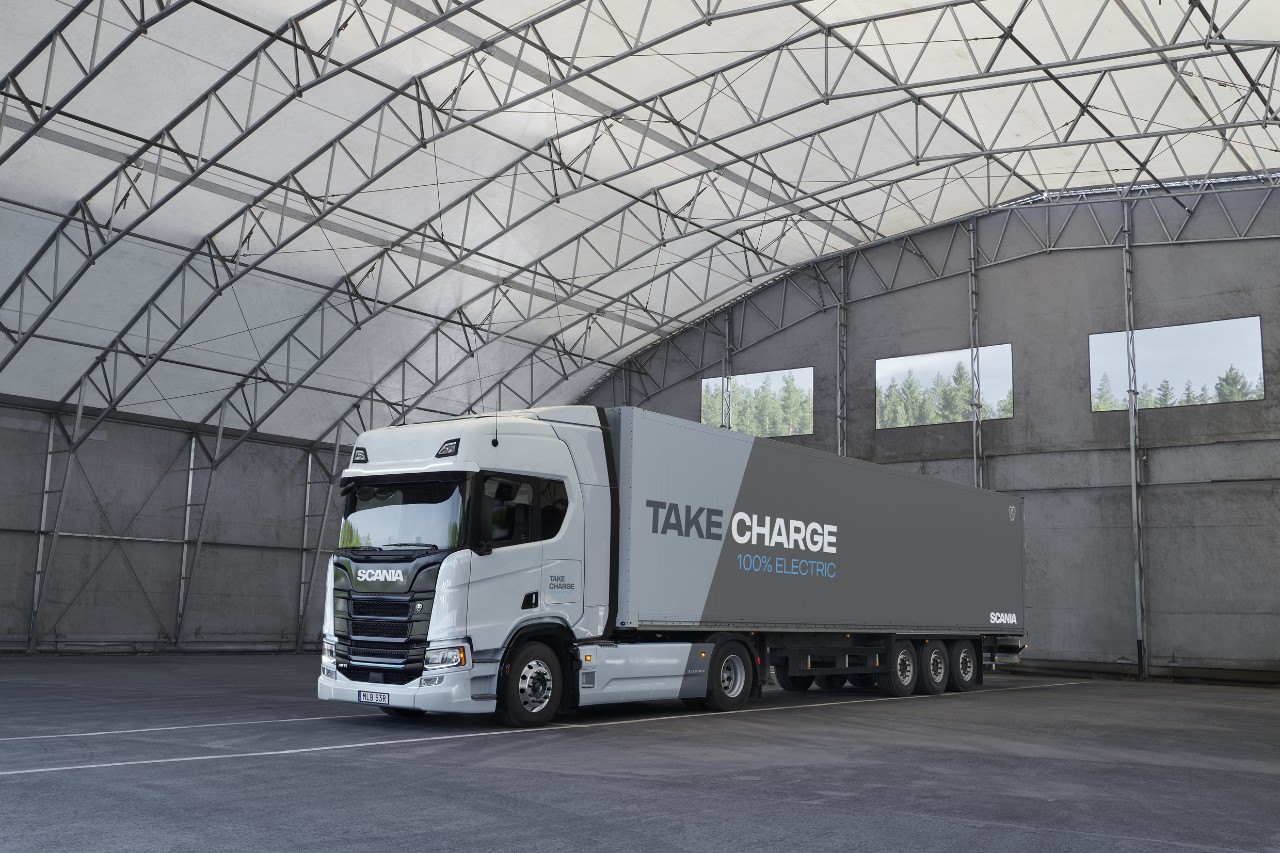
Top 5 electrification trends in 2024
By: Fredrik Allard, Head of E-mobility at Scania
What’s in store for electrification in 2024? Fredrik Allard, Head of E-mobility at Scania, has the answers.
Although I sometimes wish the shift could go quicker, it’s obvious that the heavy transport industry took major steps towards electrification in 2023.
But the pace will not slow down. On the contrary, I’m convinced electrified transport will speed up even more in the coming year. Here’s what I see as the most important electrification trends in 2024.
1. More regulatory boosts and subsidies
Governments worldwide are continuing to put their weight behind cleaner transport. We see an increasing number of state and public authority-funded incentive programs appearing throughout Europe and beyond.
The European Union’s Fit for 55 is the most powerful driver. The target in the legislation package is clear: we need to cut carbon emissions from transport by 45 percent by 2030 compared to 2019.
That’s why I expect to see more of the type of nudging that Germany has practiced in recent years, such as toll-free access for electric trucks on highways. A recent example is Denmark, which will introduce a new CO2 emissions tax to several key roads in 2025.
Our shift towards electrified transport without emissions needs to be supported by politicians. And we urge politicians all over the world to make that happen. This would remove the final bottleneck for electrified heavy transport and be legislators’ best contribution to development.
2. Total cost of ownership tipping towards electric
Battery electric trucks, BEVs, are now on track to outshine their diesel equivalents in Total Cost of Operations (TCO). While the upfront cost might still be 2.5 times higher, lower maintenance expenses and falling electricity prices tip the scales in favour of electric trucks. We are quickly approaching a situation where transport companies can reach break-even for the investment in just two years.
And if we see more public initiatives stimulating electricity rather than fossil fuels, the shift could go even more rapidly. That’s when this trend truly aligns sustainability with economic viability for fleet operators.
3. Continued charging infrastructure expansion
Even if depot and transport hub charging often is sufficient for many transport applications, public charging is the game-changer for long-distance haulage.
Efforts are underway to develop public charging networks tailored for heavy vehicles, eradicating the last concerns about range anxiety. Governments, private enterprises, and collaborations such as Milence, an industry joint venture where Scania is one of the stakeholders, are working to establish a reliable charging infrastructure grid for heavy transport.
But there is also a solution that works right here, right now. By signing up for Scania’s service Scania Charging Access, drivers can access a network of all charging stations available for electric trucks – including truck-friendly stations that are actually built for passenger cars.
4. Battery breakthroughs
The battery game is really levelling up. With the launch of our new battery electric vehicles, Scania is now entering the first generation of batteries developed exclusively for heavy transport.
That’s also a huge breakthrough in battery technology.
The new battery cells are more energy-dense; they provide more energy per kilogram and per euro. Which means smaller battery packs, increased chassis flexibility, and – higher payload.
But there’s more when it comes to greater performance: the new batteries can better cope with low temperatures, they are safer, faster to charge, and prepared for the upcoming ultra-fast Megawatt Charging System. They also have longer reach, they last as long as the truck’s lifetime, and they have the world’s most sustainable battery cells.
And it doesn’t stop there. The good news is that battery development will continue at a high pace during 2024 and the coming years. Batteries will continue to be lighter, better, and cheaper.
5. Increasing demands on sustainable transport
Last year, we saw more and more of our customers expanding their electrification plans. More and more transport companies went from operating one or two BEV trucks to four or five.
I expect this trend to strengthen in 2024.
In meetings I have with our customers – the transport companies – it’s clear that the new normal is that their customers – the transport buyers – are setting ambitious goals for more environmentally friendly transport. In fact, a growing number of our larger fleet operator customers are setting up net-zero targets for greenhouse gas emissions.
That’s very promising.
It’s also logical, since consumers all over the world are speaking out louder than ever, demanding cleaner and quieter transport solutions. So, going electric is a way to stay competitive for a transport company.
About the author
Fredrik Allard is Senior Vice President and Head of E-mobility at Scania. With many years of experience from the automotive industry, his passion is developing and implementing innovative strategies to drive sustainable profitable growth.
Read more

Charging
We help you find the right charging solution for your specific need.
